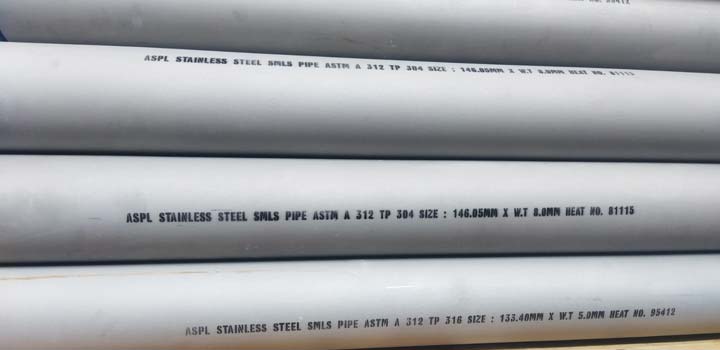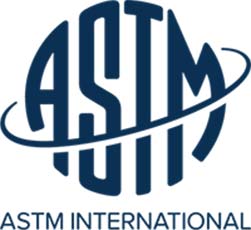In general, density is defined as the amount of something contained within a given space. Scientifically speaking, it’s the mass per unit volume. Mathematically, it’s expressed as p = m/V, where p represents density, m is mass, and V is volume. Stainless Steel 304 Density The chemical composition of 304 stainless steel includes several elements, one of which is nickel, making up at least 8%. These elements contribute to various properties such as excellent ductility, formability, weldability, toughness, and high-temperature resistance, along with ease of manufacturing. Therefore, individuals looking for these characteristics for their applications can benefit from using 304 stainless steel. AISI 304 Chemical Composition SS 304 Mechanical Properties One of the standout features of AISI 304 is its excellent formability. This makes it an ideal material for manufacturing processes that involve bending, machining, and welding. Its adaptability allows for the creation of complex shapes and designs, expanding its range of applications. Due to this property, it is suitable for industries that require customized products. As a result, buyers or consumers can create their products according to their desired specifications without worrying about formability issues. SUS304 Physical Properties Stainless Steel 304 Equivalent Heat Resistance of SS 304 Material AISI 304 Forging and Hot Working With its excellent corrosion resistance, Alloy 304 can resist rust and other forms of corrosion, making it a popular choice for numerous applications. It is widely used in kitchen sinks, cutlery, automotive and aircraft parts, and marine environments. Corrosion-resistant materials ensure long-term performance of the product. When it comes to heat treatment of stainless steel, methods vary depending on the grade, end use, and desired properties for your application. Some heat treatments increase hardness or softness, alter material properties, or improve heat conductivity. Commonly used heat treatments include aging, hardening, tempering, annealing, case hardening, carburization, carbonitriding, stress relieving, normalization, etc. Heat Treatment of SUS 304 AISI 304 Material Standard Comparison of Density of DIN 1.4301 with Other Materials How to Calculate the Density of Alloy 304 Grade To calculate the density of SS 304 material, you need to know the mass of the steel and the volume it occupies. Here's the formula: Density of steel = mass of steel / volume of steel Weight Calculation of INOX 304 Tube / Pipe Round shape: W = (OD-T) x T x 0.0031416 x Density Square shape: W = (OD x 4 / 3.14 -T) x T x 0.0031416 x Density Rectangular shape: W = ((OD1+OD2) x 2 / 3.14 -T) x T x 0.0031416 x Density Plate / Sheet W = T x Width (m) x Density Bar Round Bar: W = 0.0007854 x O.D. (mm) x O.D. (mm) x Density Flat Bar: W = 0.001 x Width(mm) x T (mm) x Density Hexagon Bar: W = 0.000866 x I.D. (mm) x I.D. (mm) x Density Square Bar: W = 0.001 x Width (mm) x Width (mm) x Density Relations Between Temperature and Pressure with Density Temperature and pressure have different effects on the density of AISI 304 grade. As temperature increases, the density of 304 stainless steel decreases, while increasing pressure always leads to an increase in density. By annealing 304 stainless steel between 1,100 – 1,150°C, you can achieve enhanced mechanical and corrosion resistance properties. This process helps reduce internal pressure, decrease hardness, and improve flexibility, making the material easier to work with during manufacturing. Thermal expansion is an important property for various engineering applications. The coefficient of thermal expansion quantifies how much stainless steel 304 can expand based on temperature changes. Mean Coefficient of Thermal Expansion of UNS S30400 Stainless steel 304 contains chromium in its chemical composition. The chromium reacts with oxygen in the air to form a protective layer, making it highly resistant to rust and corrosion. Since it requires minimal maintenance, is stain-resistant, and resistant to oxidation, it is favored for various applications, especially those where aesthetics matter. Some stainless steels may still experience corrosion damage, so the ratio of chromium content plays a crucial role in determining corrosion resistance. Higher chromium content results in better resistance to rust and corrosion. Thermal Conductivity of 1.4301 Stainless Steel Material Synthetic Label,Pp Matt Label,Synthetic Pp Label,Synthetic Paper Label SOONTOMAX (TAISHAN) LABEL MATERIAL CO.LTD , https://www.stmlabel.com
Table of Contents
Stainless Steel
Density (lb/in³)
Density (g/cm³)
Density (kg/m³)
Density (kg/dm³)
Density (lb/ft³)
304
0.286
7.93
7,930
7.93
495.05
Grade 304 stainless steel contains a minimum of 8% nickel, see AISI 304 chemical composition below.
Property
Measurement
Tensile Strength
505 MPa – 620 MPa
Yield Strength
~ 215 MPa
Elongation
50% – 60%
AISI 304 material has excellent formability, check UNS S30400 physical properties
Property
Density, lb/in³
Modulus of Elasticity, psi
Coefficient of Thermal Expansion, 68-212°F, /°F
Thermal Conductivity, Btu/ft hr °F
Specific Heat, Btu/lb °F
Electrical Resistivity, Microohm-in
304
0.285
28 x 10â¶
9.2 x 10â»â¶
9.4
0.12
28.3
Grade
UNS
Japanese JIS
Old British
Euronorm
Swedish SS
BS
En
No
Name
304
S30400
SUS 304
304S31
58E
1.4301
X5CrNi18-10
2332
Intermittent Service
up to 870°C
Continuous Service
925°C
Forging
925-1260 °C
Hot Working
1149-1260°C
Alloy 304 grade exhibits good corrosion resistance, view Heat Treatment of 1.4301 stainless steel
Heat Treatment
1149 – 1260°C
Product
Standard
Plate
ASTM A240 / ASME SA240
Flange / Forged Fittings
ASTM A182 / ASME SA182
Pipe Fittings
ASTM A403 / ASME SA403
Fasteners
ASTM A194 / ASME SA194

Types Of Steel
Density, g/cm³
Density, lb/ft³
Density, kg/m³
Density, lb/in³
Stainless Steel
7.7-8.0
481-499
7,700-8,000
0.278-0.289
Mild Steel
7.85
490
7,850
0.284
Medium Carbon Steel
7.83
489
7,830
0.283
High Carbon Steel
7.81
488
7,810
0.282
Iron
7.87
491
7,870
0.284

The annealing temperature of 304 stainless steel is between 1,100 and 1,150°C, check Thermal Expansion of SUS 304 material.
0-100°C
0-315°C
0-538°C
17.2 μm/m/°C
18.4 μm/m/°C
16.2 μm/m/°C
Chromium prevents rust and corrosion in SS 304 material, view Thermal Conductivity of DIN 1.4301
at 100°C
at 500°C
16.2 W/m.K
21.5 W/m.K
Stainless Steel 304 density
Chromium
20%
Nickel
10.5%
Carbon
0.08%
Manganese
2%
Silicon
1%
Phosphorus
0.045%
Sulfur
0.03%
Nitrogen
0.1%